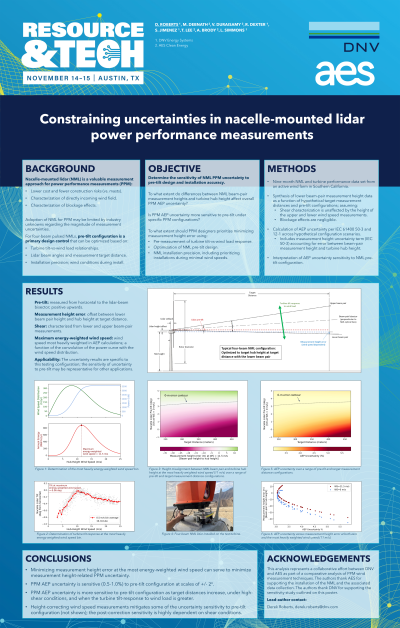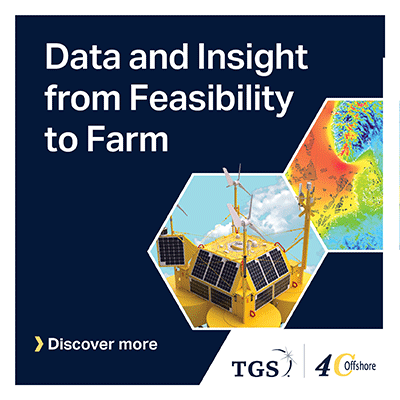Back

Combined Technologies: Measurement Systems
Constraining Uncertainties in Nacelle-Mounted Lidar Power Performance Measurements
Tuesday, November 14, 2023
4:15pm – 5:15pm CST


Derek Roberts
Senior Engineer
DNV Energy Systems
Presenter(s)
Presentation Description: Nacelle-mounted lidar (NML) is a promising alternative to mast-based wind measurements for wind-turbine power performance measurements (PPM). NML measurements eliminate the time and risk associated with siting, permitting, designing, and installing hub-height masts. On-turbine NML installations allow for straightforward co-installation of near-hub-height air density measurements. And yaw-oriented NML measurements capture the directly incoming wind field and enable characterization of blockage effects that can bias PPM. Given the recent publication of an IEC standard for NML measurements (61400-50-3), the broader adoption of NML for PPM may primarily be limited by industry unknowns regarding the magnitude of measurement uncertainties and best practices around on-nacelle installations.
We present comparative results from recent projects with co-located meteorological masts and NMLs, highlighting consistencies and differences in AEP and uncertainty estimates with both technologies. We further evaluate the sensitivity of NML measurement uncertainties to error in NML pre-tilt configuration, one of the primary controls for NML PPM designers. How valuable are accurate turbine tilt-vs-wind load relationships to PPM design? To what extent should NML installation teams prioritize pre-tilt accuracy? How much are the uncertainty implications of pre-tilt configuration error magnified with increasing measurement distance? We directly address these questions using an analytical extrapolation of a measured NML dataset from southern California, USA. Our results directly quantify the uncertainty implications of a range of pre-tilt error magnitudes, and how the effects are magnified with measurement target distance.
We present comparative results from recent projects with co-located meteorological masts and NMLs, highlighting consistencies and differences in AEP and uncertainty estimates with both technologies. We further evaluate the sensitivity of NML measurement uncertainties to error in NML pre-tilt configuration, one of the primary controls for NML PPM designers. How valuable are accurate turbine tilt-vs-wind load relationships to PPM design? To what extent should NML installation teams prioritize pre-tilt accuracy? How much are the uncertainty implications of pre-tilt configuration error magnified with increasing measurement distance? We directly address these questions using an analytical extrapolation of a measured NML dataset from southern California, USA. Our results directly quantify the uncertainty implications of a range of pre-tilt error magnitudes, and how the effects are magnified with measurement target distance.
Learning Objectives:
- Upon completion, participants will be able to understand key benefits challenges and benefits associated with nacelle-lidar turbine performance testing.
- Upon completion, participants will be able to understand how power performance test designers can constrain measurements uncertainty using optimized lidar configuration techniques.
- Upon completion, participants will be able to understand the sensitivity of nacelle-lidar measurement uncertainties to pre-tilt design.

